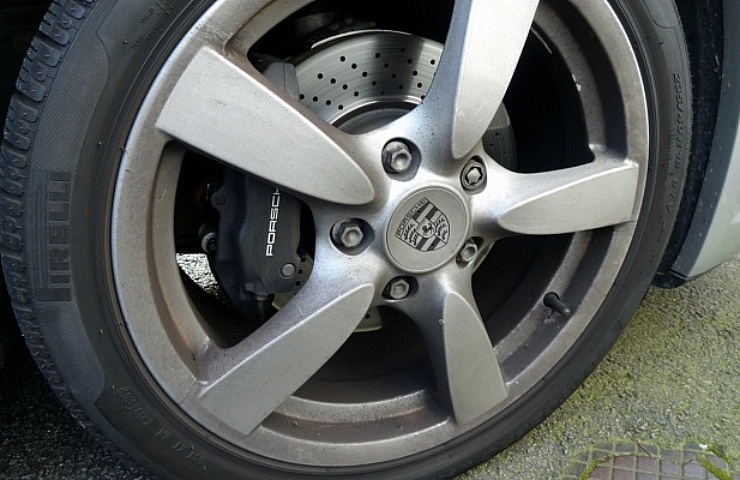Contents
Here are a few signs that your brakes need attention.
What Do Squealing Brakes Mean?

If your brakes are squealing, it’s probably time to replace the pads. (Photo at top: Courtesy of Iain Cameron via Creative Commons)
Modern brake pads have a metal plate embedded in the brake pads. When the brake pads wear down to a critical level, the brakes squeal. Ignore that sound at your own risk.
Squealing brakes usually means your brake pads need to be replaced. Otherwise, they could begin digging into the rotors or brake shoes.
But it’s worth it to spend a few minutes troubleshooting your brakes. Occasionally the squeal or grinding noise is from debris caught in the pads. First, try applying the brakes while driving in reverse to see if that dislodges any debris. If that doesn’t work, remove the wheel and search for debris you can remove.
Shop now for Brake padsRead these: Three Types of Brake Pads and How To Change Your Brake Pads.
Burnt Odor from Your Wheels
If you smell something burning coming from the wheels, that could indicate excessive use of the brakes. If you descend a lot of hills, shift into a lower gear for the trip and try not to ride (or constantly apply) the brakes. When it’s safe, lift off the brake pedal and allow the pads and rotors to cool down.
Regardless, if you smell a burnt odor consistently, the brake pads might have glazed. That’s when braking friction is pushed beyond temperature limits, often due to repeated hard braking. Glazing reduces braking power.
Visible Brake Dust

When cleaning your rims, you might see brake dust. If one side is dirtier than the other, that’s a warning sign.
Black powdery brake dust is unsightly on a nice set of rims. First, make sure to keep your rims free of road grime. Then, if you notice one side is getting dirtier than the other, it could be a sign of uneven wear. It’s a simple sign, pointing to a case where diagnosing a brake problem is essential.
That typically occurs when the brake on that wheel is being used more than the others. Usually, that’s caused by the brake caliper not engaging or releasing the rotors. This situation requires immediate attention.
Shop now for Brake cleanerWhat Causes Spongy Brakes?

A spongy brake pedal points to issues with your brake lines.
When you step on the brakes, you should feel some resistance. If you hit the brakes, and it feels spongy, mushy, or squishy, that’s a sign of air in the brake lines or the brake fluid needs replacing. Also, there could be water condensing into old brake fluid.
The brake feel should be consistent and linear. Otherwise, you should check the brake lines. The DIY-friendliness of some brake line repairs makes this one of the easiest ways to troubleshoot brake problems.
Shop now for Brake linesTroubleshooting Brake Pedal Vibrations

A warped rotor can cause vibrations when you apply the brakes.
A brake pedal that vibrates or pulses is a sign of warped rotors. Warping happens when the rotors are overused and overheated.
Sometimes they can be fixed by “turning” or removing a small layer of the metal that warped. However, today’s rotors are often too thin to be turned. The brake rotors usually need replacing.
Shop now for Brake rotorsPulling to One Side
If you step on the brakes and the car immediately moves to one side, your brakes are probably not in sync. In other words, the car’s brake pads are wearing unevenly, or brake fluid is not being equally applied to all brakes.
Uneven braking makes it challenging to handle a vehicle, especially in a panic stop. Safety first: Replace your brake pads and investigate what’s causing uneven wear.
Shop now for Brake parts




